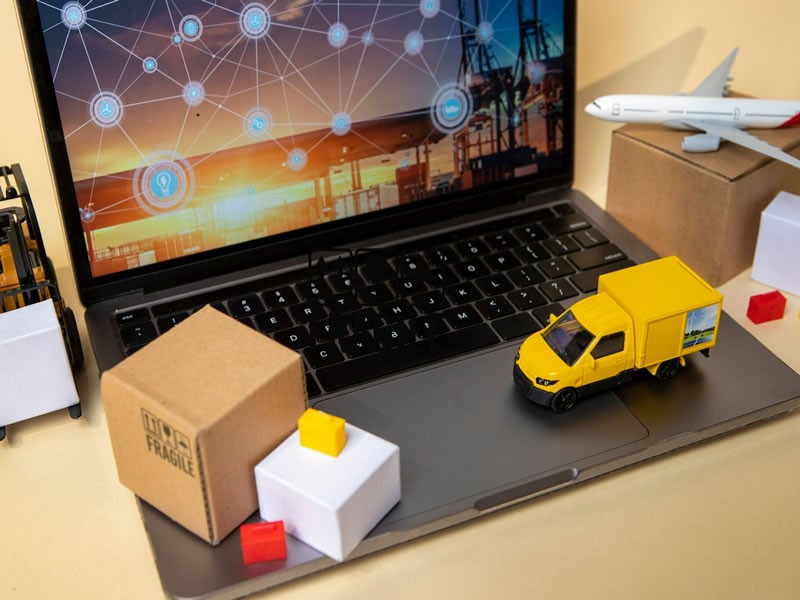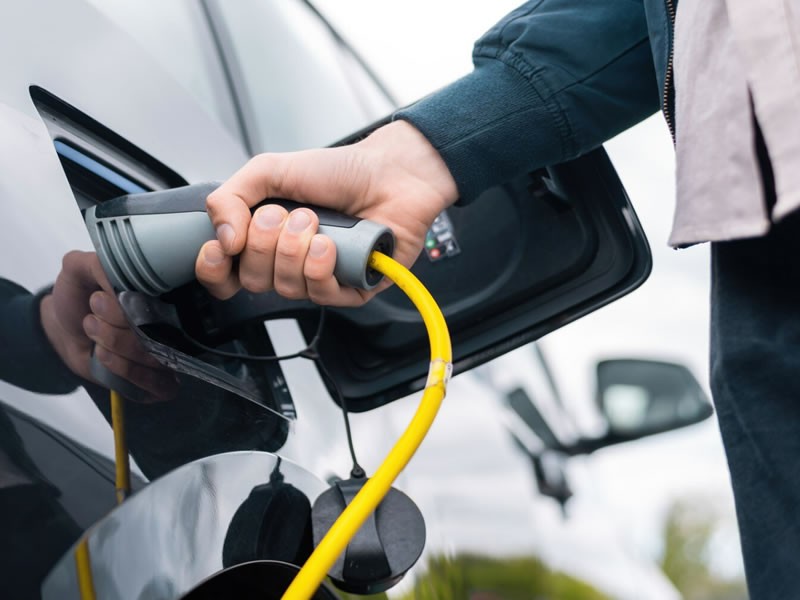Insight Blog
Agility’s perspectives on transforming the employee's experience throughout remote transformation using connected enterprise tools.
7 minutes reading time
(1487 words)
The Role of Electric Fleets and Telematics in Shaping E-commerce Logistics
Experience enhanced power consistency with electricity replacing traditional fuel, for improve Logistics.
The entirety of the automotive industry is evolving and, with it, the nature of enterprise logistics. There are more electric vehicles than ever, which is not a random shift. Electric vehicles are simply more efficient than before and are worth using in fleets.
Naturally, since it's no longer fuel but electricity that we're talking about, the power quality tends to be more consistent, which is why telematics and battery intelligence give more accurate diagnostic results.
Naturally, since it's no longer fuel but electricity that we're talking about, the power quality tends to be more consistent, which is why telematics and battery intelligence give more accurate diagnostic results.
With all of this in mind, what is the role of electric fleets and telematics in shaping e-commerce logistics?
Let's find out!
- What makes electric cars more viable in large fleets?
In the past, electric cars were a cutting-edge technology with limited usability and high price. This means that only people could afford them (if they were green-minded), and even then, this was only viable in some areas since the infrastructure (in terms of charging stations) wasn't that great.
Because of this, in the past, electric cars were merely private vehicles that individuals could get for personal transportation. Since they were not as convenient, you had to sacrifice some of your convenience to be green consciously.
Well, this is no longer the case. Due to numerous technological advancements, large electric car fleets are more viable than before.
Now, the costs of electric vehicles are going down, the number of mechanics with experience in fixing electric vehicles is decent, and charging stations are everywhere. Even psychological obstacles like range anxiety can be easily overcome with sophisticated battery software like fortescue Elysia, which accurately updates your range in real time.
Since modern batteries are so powerful and charging technology is so advanced, more and more fleet managers are switching to electric cars. As mentioned earlier, battery analytics (battery intelligence systems) and fleet management tools can be more accurate at evaluating routes and driving behavior. In the past, gas theft was a serious problem that every fleet faced, but electric cars could become obsolete.
Other than this, there are so many government incentives and regulations pushing this green change that, as a business, you have a much easier (and cheaper) time starting your fleet.
With the government cracking down on large fleets and actively aiming to reduce emissions, soon, everyone might have to make this switch.
Going with electric vehicles sooner is a proactive move that could save you a lot of trouble in the future.
2. The impact of modern telematics on fleet management
Automation of messaging ensures that every time certain conditions are met, a message or notification is sent to a specific system. This means that most communication is automated and that the fleet manager has more of a supervisory role than anything else.
The first major advantage of telematics systems is tracking vehicles in real-time, with far more locational data than ever. Since modern electric cars have superior diagnostics systems, combining these with fleet management gives you more information about how your vehicles behave in the field than was ever available. This way, you can improve your predictive maintenance efforts and more accurately optimize your routes.
As a fleet manager, you must look for more than passing time. If a driver is always on time but achieves so by speeding and reckless on-road behavior, you must notice and suspend them before they cause an accident behind the wheels of a company vehicle.
The size of the fleet doesn't matter; it's asset utilization that counts. Even if you have a thousand vehicles in your fleet, if your workload requires 1,100 vehicles, you lack the resources to meet the supply chain needs. Most importantly, it's not just about lacking vehicles; it's about lacking vehicles on one end and letting others idle or take suboptimal routes.
With the help of modern telematics systems, you can easily improve the utilization of all the vehicles in your fleet.
Most importantly, with telematics, every time your vehicle leaves the garage, it starts harvesting data. All this data ends in the same place, and with the help of vehicle management systems, these become invaluable insights. This way, you get a way to improve your fleet management as a whole.
3.Integration of e-commerce solutions with fleet management
A lot of fleet managers actually focus on the process so much that they completely lose sight of what all of this is actually for. You see, instead of worrying too much about the fleet, your priority needs to be the functionality of the fleet. In e-commerce, the purpose of the fleet is to be the vessel of your delivery. Your customers don't evaluate you by the state of your fleet but by its efficiency.
In other words, your fleet is just one cog in the machine that's your e-commerce service. This means you must integrate it with all your other e-commerce services like your sales platforms, ERP, CRM, etc.
Remember that your customers don't care that some of your vehicles aren't functional and that you can't restart them until you get the needed parts. The customer won't have too much tolerance for these excuses, especially since they know you have access to the same type of functions they do. Just like they can order from you, you can use an e-commerce platform for automotive to order spare parts. Even if you don't already have them in your workshop, they shouldn't take too long to arrive.
Keep in mind that running your own fleet is always a challenge, and there's a reason why so many e-commerce businesses either outsource or opt for a drop-shipping model. Still, with so many tools, e-commerce services, SaaS services, platforms, and electric vehicle analytics, you have more tools to make it work than ever before. Now, the computing power these AI platforms provide more than makes up for lack of experience, but this doesn't mean veteran fleet managers will become redundant or unnecessary. Still, you need someone familiar with electric vehicle fleets since these operate differently than traditional fleets.
Follow us and access great exclusive content everyday: Follow us on Google News
4.Biggest Challenges in e-commerce logistics
Having all of these tools and resources available doesn't mean you have an easy job organizing the delivery process. In fact, e-commerce logistics are filled with challenges of all kinds, ranging from delivering packages to customer doorsteps to peak season demands.
A lot of people forget that returns management also falls under the category of e-commerce logistics. Now, electric fleets drastically reduce the carbon footprint of these returns; however, this still doesn't make them cheap or easy to organize.
Then, there's the supply chain visibility. With so many warehouses and transportation partners, you may need more than one dashboard to follow everything happening. This is especially important to stress out since it's industry standard to let customers track some of your shipments.
In the hyper-connected world that we live in, e-commerce businesses often have international customers, which means that you also have to find a way to tackle cross-border logistics.
Now, if you're using electric vehicles for your fleet, you have another challenge to add - the charging time. It doesn't take long to fill a full tank with gas; however, if you're charging vehicles, this may take quite a bit. You must have a good charging schedule (coupled with battery analytics) or more charging stations. This infrastructure compatibility is a significant challenge for most enterprises.
5.Future trends and innovation
So, what does the future hold?
Telemetrics heavily depends on the computing power available, which is why development in the field of AI represents a huge leap forward. This means that, in the future, with more available data and stronger AI-powered software, the art of predictive maintenance and route optimization will be brought to its pinnacle.
Thanks to the increase of smart devices and the expansion of IoT, more objects will feed data into the system. This means that other than being better at predictive analysis, these programs will have more data to base their predictions on.
Electric vehicles, batteries, and battery software are improving each year. This means that the technology will finally be able to keep up with this trend and concept. Batteries can hold longer, software can provide more accurate diagnostics, and, with greater adoption and familiarity, range anxiety won't hit as hard.
In other words, the blueprints for the future system of electric fleets supported by telematics seem to be the direction this industry is moving toward. With each upgrade, the system will be more robust and appealing to those who have yet to introduce it.
You may also like: Best Apps for Employees: UPDATED 2022 – A Complete Guide
Free ebook: How To Get Your Intranet Off The Ground
Categories
Blog
(2636)
Business Management
(325)
Employee Engagement
(212)
Digital Transformation
(176)
Growth
(120)
Intranets
(119)
Remote Work
(61)
Sales
(48)
Collaboration
(36)
Culture
(29)
Project management
(29)
Customer Experience
(26)
Knowledge Management
(21)
Leadership
(20)
Comparisons
(6)
News
(1)
Ready to learn more? 👍
One platform to optimize, manage and track all of your teams. Your new digital workplace is a click away. 🚀
Free for 14 days, no credit card required.













